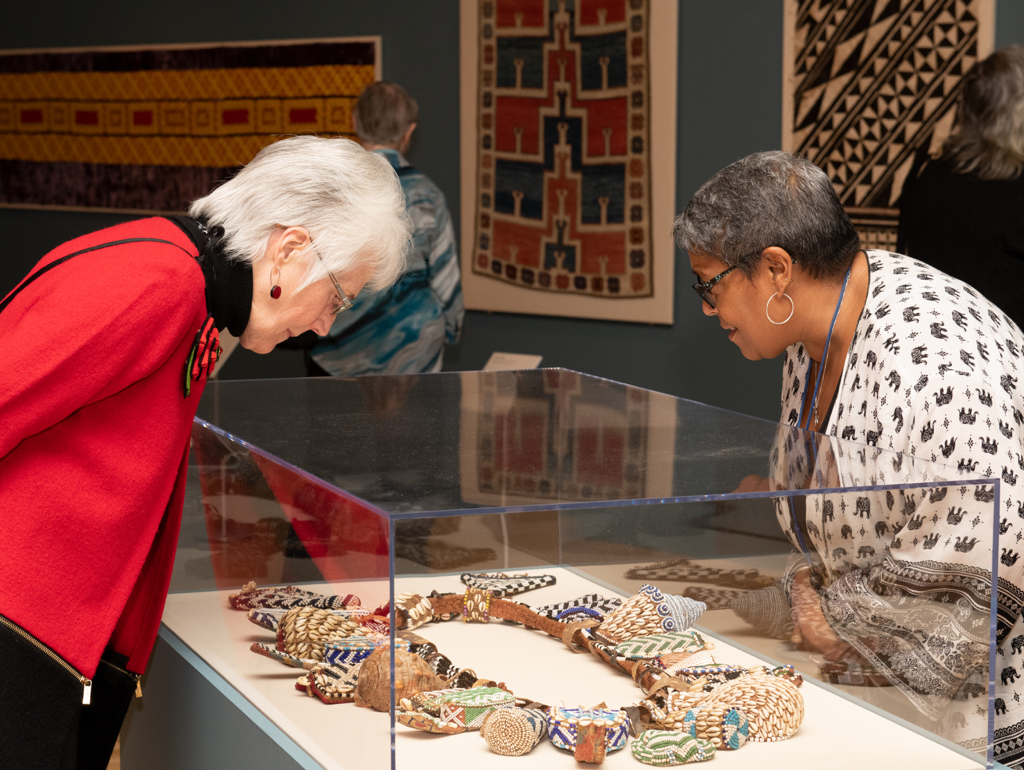MEDIA CONTACTS:
Amelia Thompson: athompson7 gwu [dot] edu, 202-994-6460
gwu [dot] edu, 202-994-6460
Maralee Csellar: csellar gwu [dot] edu, 202-994-6460
gwu [dot] edu, 202-994-6460
WASHINGTON (Feb. 22, 2020)—Over his lifetime, Lloyd Cotsen was known as many things: a philanthropist, the CEO of skin and hair care company Neutrogena and an accumulator of art. Though he was best known for his professional work, his personal legacy is the Cotsen Foundation for the Art of Teaching and his world-renowned collections of textiles, basketry and folk art. “Delight in Discovery: The Global Collections of Lloyd Cotsen” opens today at the George Washington University Museum and The Textile Museum, and emphasizes Mr. Cotsen’s eclectic vision of the world. The exhibition is on view through July 5.
“Delight in Discovery: The Global Collections of Lloyd Cotsen,” highlights the global spectrum of his interests, primarily through textile fragments and garments collected over a 60-year period. A small number of his personal photographs are also on display to better understand Cotsen’s vision and to learn what inspired him to bring together such unusual, but exceptional, works of art. The works gathered at GW are from multiple collections built by Mr. Cotsen, but draw heavily from the Cotsen Textile Collection, which was gifted to the university in 2018 by his wife, Margit Sperling Cotsen.
“Lloyd Cotsen left an indelible mark on the world both in his professional life and through his personal interests,” exhibition curator Lyssa Stapleton said. “His desire to collect art and promote an understanding of indigenous cultures and underappreciated art forms has left us with vast and varied resources from which to study and draw inspiration.”
In its “Five Ways of Looking” section, the exhibition explores how fragments can reveal diverse knowledge through examples from the Cotsen Textile Traces Study Collection, a group of some 4,000 fragments from Asia, the Middle East, Africa, Europe and the Americas dating from antiquity to the present. Created by Mr. Cotsen as a resource for scholars, artists, students and curators, this collection also was gifted to GW in 2018 and will be permanently housed in the museum’s new Cotsen Textile Traces Study Center, opening in April.
Some of the examples on display in “Five Ways of Looking,” include a fragment from a man’s coat dating to 338–596 A.D. as well as a bible from 1617 England. The coat was made in Iran from silk samit, one of the most sought after fabrics in the ancient world, and is decorated with winged horses and ribbons, symbols of Sasanian royalty. The 17th-century bible has a silk cover and is inscribed with a list of births and deaths of the Caygill family to whom it originally belonged.
“The fragments in the Textile Traces collection have an aesthetic, technical and cultural story to tell,” Marie-Eve Celio-Scheurer, the academic coordinator for the Cotsen Textile Traces Study Center said. “We hope that visitors develop an understanding of the remarkable potential of textile fragments to reveal the unique traditions and cultures of the people who created them.”
For the most up-to-date information on the GW museum's visiting hours, exhibitions and educational programs please check museum.gwu.edu/visit.
-GW-


